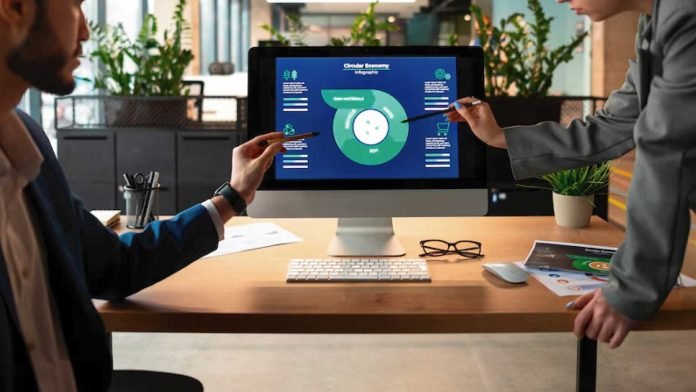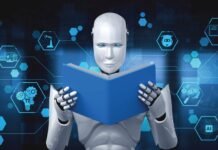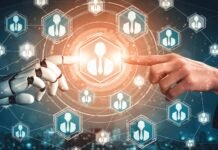1. Concept of an Augmented Workforce
2. Cognitive Insights Applications in Talent Acquisition within HR
3. Reasons for Moving to Cognitive Insights
4. Challenges and Considerations
Conclusion
In recent years, the realm of human resources (HR) has undergone a remarkable transformation, driven by technological advancements. Artificial intelligence (AI) and machine learning helped evolve the traditional HR functions of hiring, training, and managing into a more sophisticated, strategic role. This has formed a new concept called an augmented workforce, i.e., technologies that can empower human capabilities. In this regard, one of the significant potentialities is taking place with the help of cognitive insights to transform HR practices.
1. Concept of an Augmented Workforce
An augmented workforce refers to a team of human staff working with advanced technology partners to enhance productivity, efficiency, and decision-making. In the HR context, it’s about using AI, machine learning, and other digital tools to make HR professionals more effective.
● Enhanced Decision-Making: AI can process vast amounts of data much faster and more accurately than humans, providing HR professionals with data-driven insights that augment better decision-making.
● Better Efficiency: Automation of repetitive activities, for example, resume screening, interview scheduling, and onboarding processes, frees HR personnel to spend more time on strategic activities.
● Improved Candidate Experience: Chatbots and virtual assistants powered by AI can provide real-time responses to candidates’ questions, resulting in a smoother and more engaging recruitment experience.
● Personalized Employee Development: Machine learning algorithms scan through employee performance data and develop customized development plans, helping all employees develop in the areas they require to perform optimally.
2. Cognitive Insights Applications in Talent Acquisition within HR
While the augmented workforce improves HR operations, cognitive insights take this step further into more profound, more actionable intelligence. Cognitive insights are developed with AI technologies, for instance, natural language processing and predictive analytics, which analyze unstructured data to draw patterns and trends that can be meaningful.
● Talent Acquisition: These cognitive insights can be brought in to sift through social media profiles, professional networks, and other online footprints to surface potential candidates who not only satisfy the technical requirement but fit into the culture and value system of the organization.
● Employee Engagement: By examining employee surveys, emails, and other communications, cognitive tools detect issues that underlie the reported ones and are likely to affect employee morale adversely and proffer interventions that improve employee engagement and retention.
● Performance Management: In this way, cognitive insights related to the prediction of future performances can be gained through historical data, and an HR manager can exercise proactive decision-making for an available promotion, transfer, or other career development opportunities.
● Workforce Planning: Using predictive analytics, workforce trends can be predicted, which helps an HR professional predict staff needs and skill shortages and even map out talent needs in the future.
3. Reasons for Moving to Cognitive Insights
● Data-Driven Decision-Making: The move to cognitive insights is mainly fueled by a demand for data-driven decision-making. In this modern, competitive business world, one cannot rely solely on intuition or historical data to make decisions. In this way, cognitive insights arm HR practitioners with an understanding of employees, therefore allowing more informed decisions.
● Enhanced Employee Experience: Another driver for using cognitive insights is enhancing employee experiences. Insight into the behavior of employees and their sentimental nuances helps HR design interventions catering to individual needs, resulting in higher job satisfaction and retention rates.
● Proactive HR Management: Cognitive insights transform HR from reactive to proactive. HR can avoid problems by predicting what might go wrong and applying preemptive solutions, leading the business toward a more resilient and agile organization.
● Competitive Advantage: Organizations reap cogent insights with a competitive advantage in attracting and retaining top talents, workforce productivity optimization, and a harmonious alignment of HR strategies with business strategies. This strategic advantage is critical in the market, for talent is a significant differentiator.
4. Challenges and Considerations
As attractive as the benefits of cognitive insights are. However, there remain a set of challenges. Privacy and security of data come first since HR has sensitive information regarding its employees. On top of the list is the need to ensure fairness by embracing AI tools with much transparency in reaching decisions. However, it also involves high investments in technology and training. An organization, therefore, needs to highly invest in the infrastructure and upskilling of HR personnel to be in a position to take maximum advantage of these sophisticated tools.
Conclusion
The journey from an augmented workforce to deriving cognitive insights is a giant leap in the world of HR. By adopting these technologies, HR professionals are better suited to make informed decisions that improve experiences and overcome workforce challenges. Linking cognitive insights will be, therefore, a key impetus for HR to steer strategic initiatives as organizations seek sustainable success in modern workplaces.
Explore HRTech News for the latest Tech Trends in Human Resources Technology












